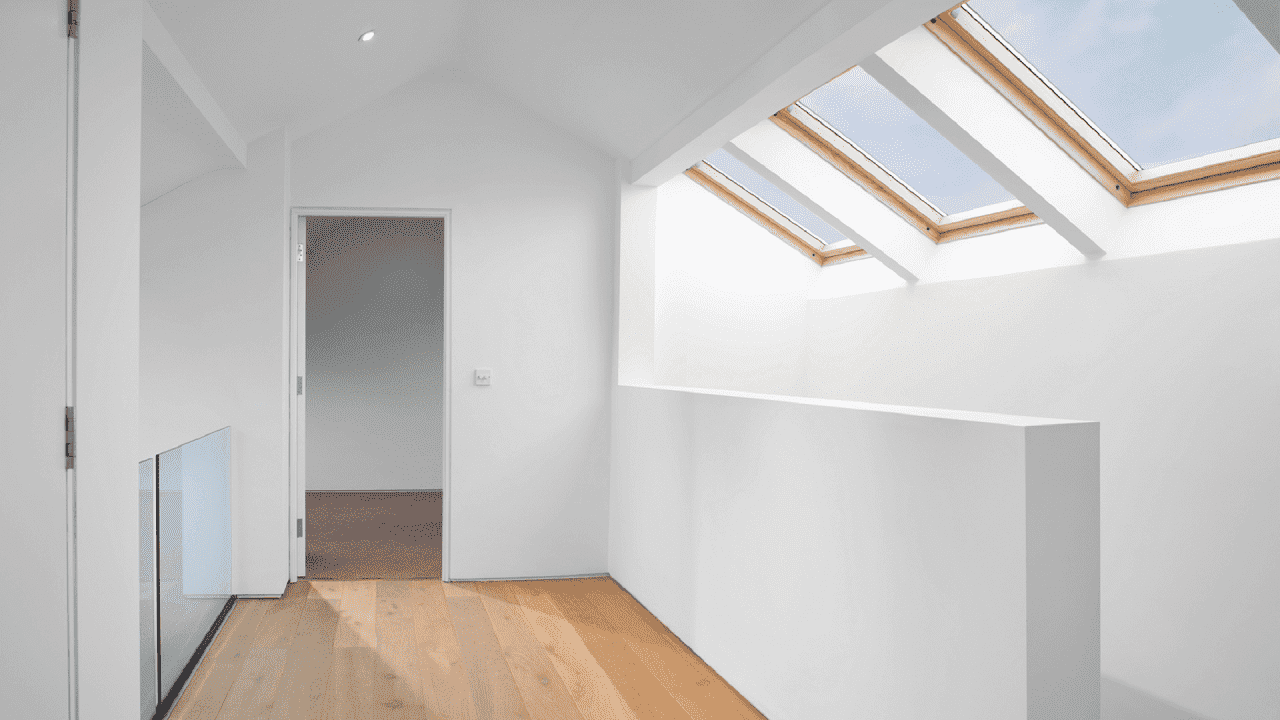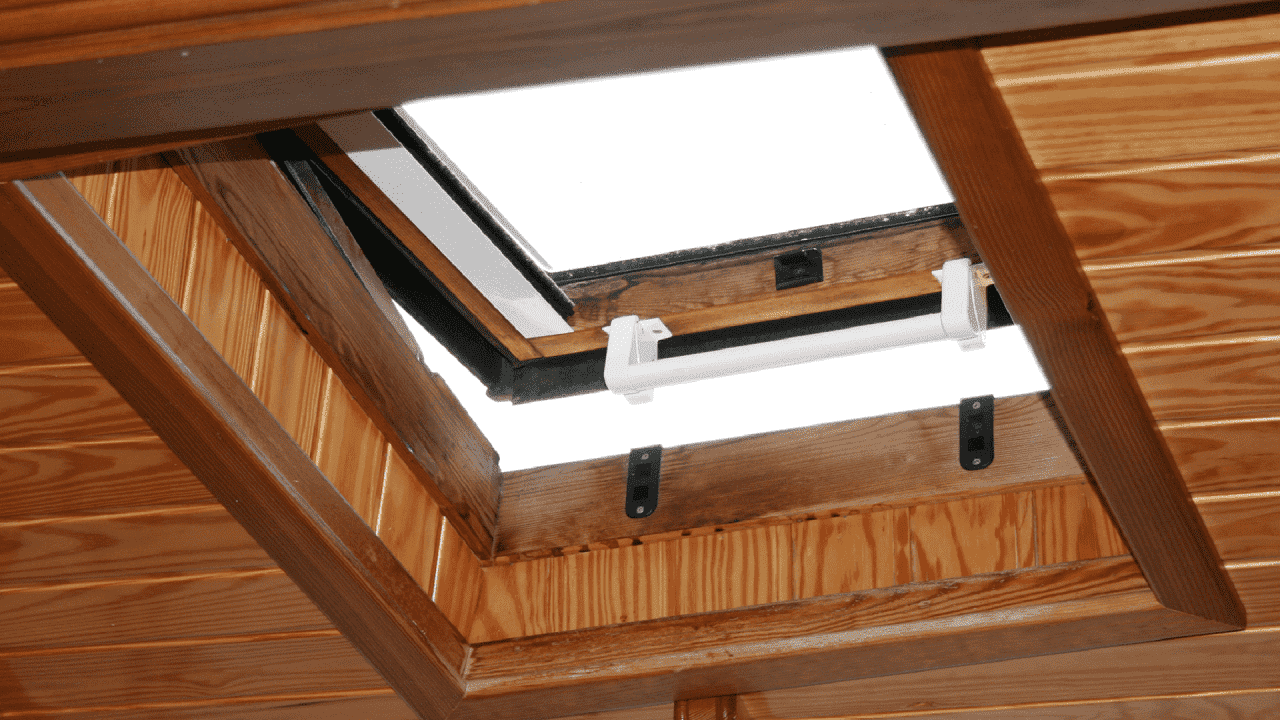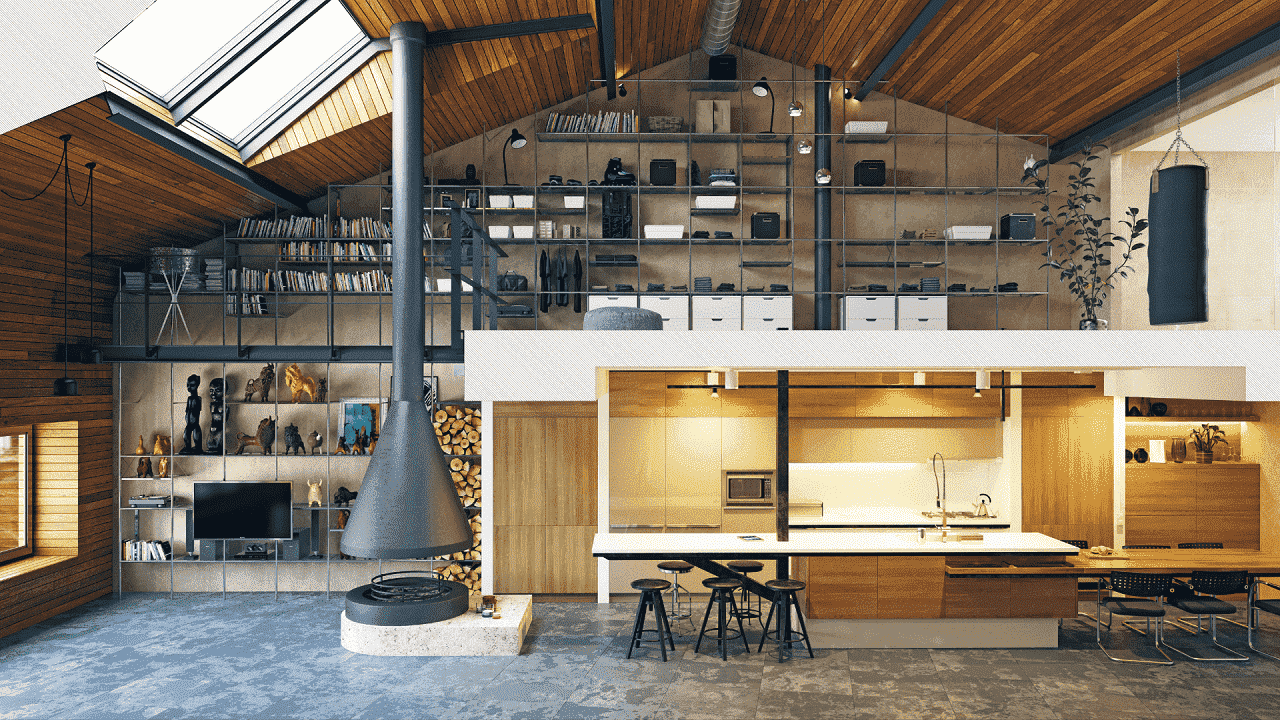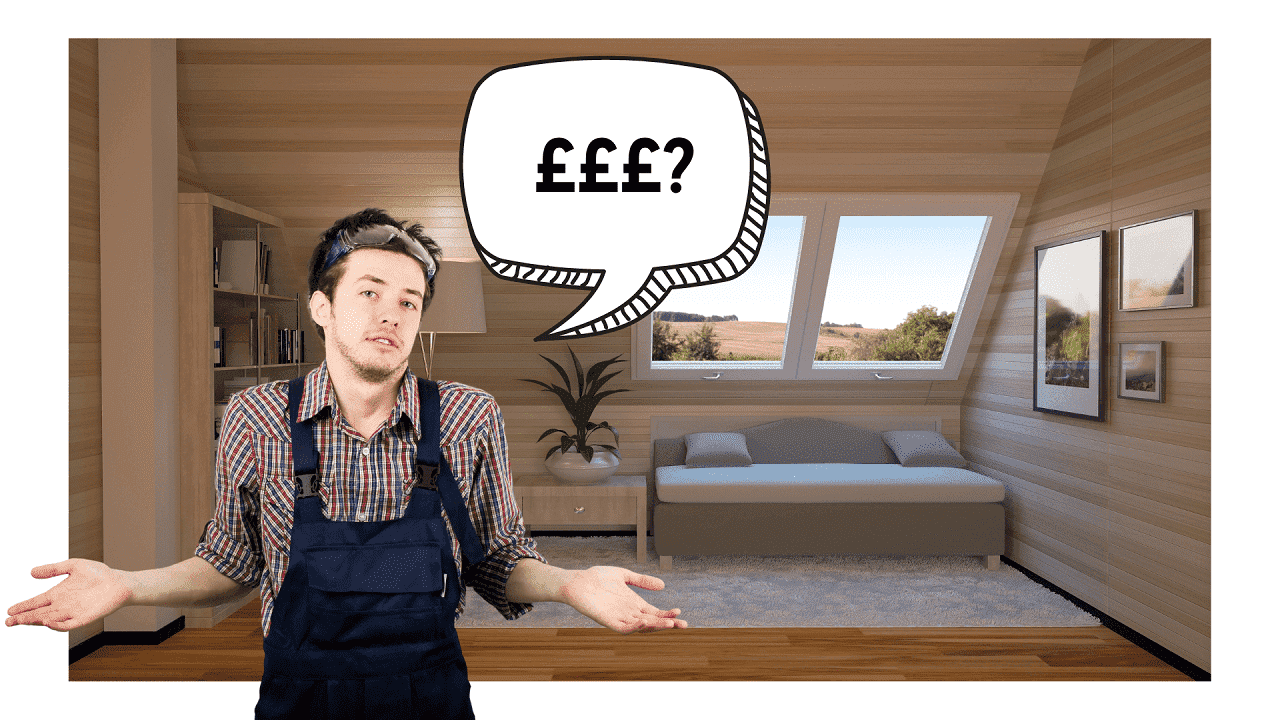Terraced House Loft Conversion Guide For 2023
1 October 2021
The Terraced House Loft Conversions Guide For 2022
Due to limited expansion space and restrictive inner-city planning, a
loft conversion in a terraced home could be the simplest way to increase the size of your terraced home, due to many Victorian homes in the UK having exceptional attic space, this makes them perfect for a loft conversion
and can be used as an office, guest bedroom or even games room.
It's vital you choose the right professional for your Loft Conversion. If you're on the fence regards your home renovations, Don't hesitate to reach out to one of our friendly architects for a free consultation.
What types of Loft Conversions in a Terraced House are there?
1. Rooflight Loft Conversion
The simplest and most cost-effective way to convert your loft into a more liveable environment is to install roof light windows. Doing so, means you don't have to make any external alterations to your roofline. Roof light loft conversions work best when there is ample headroom throughout your loft, This is so that you can make full use of all the available floor space. The extra floor space will allow for vast additional space that can be used as a guest bedroom or home office.
Conservation roof light loft conversions requires significantly less construction work than other types of loft conversions. You may be asking; Do I need Planning Permission? You do not normally need planning permission for roof light loft conversions in the United Kingdom.
A roof light loft conversion offers many advantages to your loft space such as windows that allow for a large amount of light, making your loft conversion feel spacious and airy. Optionally, You could try adding rain sensors which automatically close the windows when rain is detected on your roof light windows. This is a life saver because it's so easy to forget to close your windows when you are busy!
2. Dormer Loft Conversion
Dormer loft conversions
are an extension of your existing roof, which projects vertically from a sloping roof giving you additional floor space and headroom within your loft. Dormers can have a flat or pitched roof that can be designed to fit all house styles.
Since new regulations were introduced in 2008, Many Local Authorities in the UK allow dormer loft conversions to be built without planning permission providing the design is within guidelines. This makes them a great choice of loft conversion for those needing their loft converting urgently. You don't have to worry about building regulations with Architecture 365, Our Architecture Firm
take care of building regulations for you, We do this because we want to make the whole process as smooth as possible for our clients.
3. Mansard Loft Conversion
Mansard loft conversions
are typically built at the back of the house, Opening up your roof so that you can make the most of your loft space. This type of loft conversion has a flat roof with a back wall that slopes in wards. The wall slopes at an angle of 72 degrees incorporating windows in the form of small dormers. They look fantastic!
Mansard loft conversions often require planning permission; This is due to large changes in your roofs structure and often require more construction work than any other type of loft conversion.
Loft Conversion Design Considerations
Common design considerations you are likely to face and will need to resolve:
• Ceiling height
• Access
• Services
• Lighting issues
• Planning permission
• Building regulations related to floor strength and fire escapes
Despite these design considerations a loft conversion in a terraced house can be life changing and there a cost effective solution for those with space problems in their home.
Terraced House Loft Conversion Plans
There is a ample space within Terraced homes in the United Kingdom, particularly Victorian Homes to convert your loft into a beautiful space.
You will need plans to begin your moulding your loft into a wonderful new space. Try speaking with local architects that are able to provide you with designs for your loft conversion. Be sure to look out for Architects that have fantastic reviews!
Is my Loft suitable for Conversion?
Not all lofts are suitable for conversion. Before going too far into planning you’re your loft conversion project, we suggest you carry out a brief survey that checks the following
Roof structure — Is it a traditional cut rafter and purlin roof or a trussed roof?
Height — Is there enough height within your loft? Note the minimum height for a traditional roof is 2.2 to 2.4 meters and the minimum height for a modern trussed roof is 2.4 to 2.6 meters.
Space — Is the loft space large enough to provide a usable room?
Chimneys or services — These don't pass through the loft space and will not need moving.
Felt — Your roof has felt under the tiles or is fully weather tight. Note that if you don't have felt you will see the back of the roof tiles and the battens they are fixed to. If you have felt, you will most likely see a black bituminous paper under the tiles and battens. Most modern houses will have felt.
If you are confident about all these checks then you have passed the first stage of assessment. Your property may well be suitable for a loft conversion, and you can proceed to assessing what kind of loft conversion you could have.
3 Types Of Loft Conversions To Consider
What type of loft conversion is most suitable for you, will be influenced by three main factors.
• The type of roof you have
• What you want to use your loft for
• Your budget
There are three types of loft conversions to consider. These are internal loft conversions, dormer loft conversions and loft conversions that require a full removal and build.
Internal loft conversions are usually the cheapest and require minimum building intervention. However, dormer loft conversions are the most common type because of the additional space they can provide with relatively simple building works. Full removal and build conversions will give you the most flexibility however are the most complex and expensive, often requiring planning permissions.
Loft Conversion Cost and Budgets in 2021
You may be wondering, how much does a loft conversion on a terraced house cost? Costs can vary depending on which type of loft conversion
you would like. However, Loft conversions on a terraced house can cost on average anywhere between £15,000 all the way up to £60,000.
Loft Conversion Guide Price Per Square Metre
Roof Light Conversion Cost — £1,200 to £1,500 Per m2.
Dormer Loft Conversion Cost — £1,680 to £2,400 Per m2.
Professional Fees For Your Loft Conversion
Architect Fees — A typical £30,000 to £40,000 loft conversion would be in the region of £1,200 to £2,400 for planning drawings.
Building regulations fees — Under 40m2 is £385 and 40 to 60m2 is £460.
Engineer’s structural design fees — in the region of £600 to £1,800.
Planning and certificate of lawful development fees — If you cannot carry out your loft conversion under Permitted Development Rights then a householder planning application costs £172.
If you’re using your Permitted Development Rights, we advise you obtain a certificate of lawful development for £86. This certificate takes away any uncertainty and you can produce it when selling the property.
Building Control fees — in the region of £960 top £1,200
Party wall arrangement fees — Budget about £07835743338 per neighbour.
Loft Conversion Building Works
Heating — Radiators are typically £30 per m2, and underfloor heating is £45 per m2.
Boiler — If a new boiler is required with more capacity typical costs are usually between £1,800 and £3,500.
Bathrooms — Budget in the region of £4,500 to £11,000.
Decorating — Set aside £77.00 per square meter for plastering or dry lining and paint.
Flooring — Plan for £24.00 per square metre upwards.
How much is a loft conversion per m2?
Loft conversions can cost anywhere between £1,000-£2,500 per square metre. Although costs can vary depending on various factors.
Planning Permission For Your Loft Conversion
You can extend your roof space by up to 50m3 (or 40 m3 for terraced housing) under Permitted Development Rights. This is providing the allowance hasn’t previously been removed or used up. This can save you the hassle of gaining planning permission, but there are strict limits to follow.
For example, no additions are allowed at the main elevation beyond the plane of the existing roof slope. Also, you can only use materials similar in appearance to the existing house. Permitted Development Rights are removed for loft conversions exceeding the 40 m3 to 50 m3 space allowances, in conservation areas and in other designated zones, so you’ll always need full planning consent in here.
Building Regulations, Party Walls and Safety
Building Regulations
Loft conversions always need approval under UK Building Regulations (irrespective of whether they need planning permission). It pays to adopt the full plans application approach and have a detailed scheme approved before you find a builder.
Having an approved design will take much of the risk out of the work and also mean the builder has a chance to give you a fixed quotation, rather than a vague estimate.
Your Building Control officer will inspect the work at various stages. On the final inspection they should issue you with a completion certificate — don’t settle any final accounts until you’ve received the certificate.
Party Walls
If your house is semi-detached or terraced don’t forget to notify your neighbour(s) of your proposals. This requirement usually falls under the Party Wall Act 1996.
Safety
From April 2015 homeowners are now responsible for safety on their building projects – big or small. All projects will require a health and safety plan and you will be required to manage that plan.
Building Regulations, Party Walls and Safety
Converting a Terraced House Loft
A loft conversion is a great way to gain more space within your house whilst not making major structural changes. These conversions can be pretty simple to make and are a huge value for your property. However, if you live in a terraced house, converting your loft is slightly more challenging as there are particular problems that may arise due to its terraced nature. You may be thinking that that’s silly.
Why would the fact that my house is terraced cause me more trouble? Well, a terraced house simply faces more building restrictions and thus careful choices have to be made to ensure that you don’t make any major, upsetting mistakes.
We have thus put together this list of five common mistakes for all you terraced house owners! Mistakes made when converting your loft can be horribly costly or upsetting. Therefore, it is important to know and consequently avoid such mistakes. The fact that you’re reading this article is already a step in the right direction!
So, here’s a list of the five most common mistakes made:
Focusing On Resale Value and Not Loft Quality
This is one of the biggest and most common mistakes made by people. They focus too much on how their loft conversion can increase their resale value. And, consequently, they forget to consider whether or not their loft is of the quality they need and desire. It’s great that your loft conversion can increase the value of your house.
However, that should not be your priority. After all, you are still planning to live in this house for a little while longer. Why would you focus on the investment that’s so far ahead now?
An example of this is that some people would play to their property market’s desires. The market may value a property higher if it has more bedrooms. The family converting their loft may thus choose to convert their loft into two separate rooms. Technically, this would raise their market value. However, this decision also severely compromises the quality of the created rooms. These rooms may both end up being small and uncomfortable for living. As the family still is going to continue to live there for a while, they end up with two uncomfortable, barely usable rooms. This is a major mistake.
Instead of what was done, the family should have instead thought about their needs and wants and converted their loft into that. Their property’s value would still increase and they would also have a new and usable space for them. They get the best of both worlds.
Not checking that your loft is suitable for conversion before beginning
This is another common and monumental mistake to make. Making this mistake means that you either end up with an unusable loft or you end up having to foot a huge bill. Here’s the thing, roofs may all look fairly similar on the outside. But, on the inside, they’re different.
There are two main types of roofs in terraced housing.
The first is a cut timber roof. These roofs are perfect for loft conversions. If you have such a roof, go ahead, get your loft conversion done. The second roof, however, is a trussed roof and these roofs are impossible to use in a loft conversion. A loft conversion would consequently, require you to replace this entire roof first. That sets you up with a huge bill already.
Apart from roof types, you should also take note of some other factors. For example, if your roof is small and has little headroom even at its highest point, a loft conversion would be pretty useless because there simply would not be enough usable room. Another factor is that if your loft is already being used for storage and is pretty maximally filled, you might also want to reconsider your conversion.
After all, where are you going to place all these items if your storage room is converted? Lastly, you wouldn’t want to create too many bedrooms in your house. You’d still want there to be a roughly equal bedroom to toilet ratio.
Placing the stairs in the wrong place
Placing your stairs in the wrong place is a mistake that could severely impact the amount of space within your house. It would affect both your loft space and the lower floor space. Instead of getting more space, your house might end up feeling more cramped.
A great solution or placement for the stairs is to place them where the rest of your stairs are located too. This makes it straightforward and easy. Furthermore, it would be best if the stairs were by the side as it would take up less space for both floors.
You might want to get a smaller staircase to save space. However, it is important to remember that you’d need the staircase to be comfortable for use. The stairs would also have to be able to accommodate you when you are moving furniture up into the loft.
Failing To Plan For And Construct A Rear Dormer
Failing to include a rear dormer for your loft isn’t a fatal mistake. However, it is one that could impact the comfort and space of your loft. Having a rear dormer is great because it helps to open up the room and provides a great entryway for natural light.
Rear dormer loft conversions should be allowed under your house’s permitted development rights. However, it might be best to check and ensure that it is. Alternatively, you could look to see if any of your neighbours have it. If they do, it’s a pretty good sign that it’ll be okay for you too. It is important to note that a front dormer loft conversion is illegal. Therefore, you’d have to stick with installing a rear dormer.
Ignoring Potential Way to Increase the Space In Your Terraced House
There is a lot of potential for extra space to be made in your house. If you choose to convert the loft, you’ll be able to add a whole new floor to your house, which makes more room for you and your family.
If this is within your budget, you’d have to acquire planning permissions from your local authorities. It would also be important to check and ensure that your house’s foundation can withstand this added weight. If it isn’t, you’d have to add a foundation and that can be costly. Ultimately, this isn’t completely necessary for your loft conversion but it could greatly improve it too.




